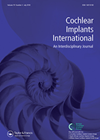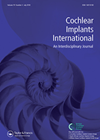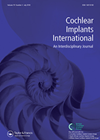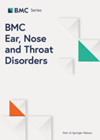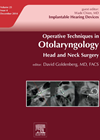
Journal Reviews
Do the modern multiple microphones with beamforming facility really help implantees?
In this study the authors aimed to assess the benefit beamforming multiple microphones provide to implantees. Speech reception thresholds were assessed in different situations; fixed masking noise from eight loudspeakers around the subject at 0°, ±45°, ±90°, ±135°, and 180°...
Is auditory frequency discrimination related to speech recognition in implantees?
Why do two identical implantees perform differently? This fundamental question has not yet been answered despite the extensive research in the field. The authors attempted to clarify the issue, or at least approach it, assessing the association between deficits in...
‘FOX’ – a new software programme in cochlear implant fitting for audiologists
Taking into account the complex parameters involved in cochlear implant fitting, it appears that the procedure is becoming more and more difficult and variable across cochlear implant centres. For this reason, a software programme called FOX was designed attempting to...
Another comparison of stapedial reflex thresholds and comfort levels in implantees
Many studies in the past have attempted to correlate electrical stapedius reflex threshold (eSRT) and comfort levels in implantees, mainly to assist fitting in young children or adults with difficulties in cooperation with audiologists. The present study assessed 11 adult...
Differences in timbral cues’ perception between teenagers with cochlear implants and those with normal hearing
The authors aimed to assess timbral cues’ perception of teenagers with cochlear implants and compare it to the respective perception of normally hearing teenagers. Thirty-four teenagers were included in the study, nine Korean adolescents with cochlear implants and 25 adolescents...
Do modern multiple microphones with beamforming facility really help implantees?
In this study the authors aimed to assess the benefit beamforming multiple microphones provide to implantees. Speech reception thresholds were assessed in different situations; fixed masking noise from eight loudspeakers around the subject at 0°, ±45°, ±90°, ±135° and 180°...
Cochlear implantation in immunosuppressed patients. Is it feasible?
The effectiveness of cochlear implantation has led to a relaxation of the candidate criteria. Patients who had been rejected in the past may now be accepted and their outcomes are encouraging. However, the acceptance of immunosuppressed patients as cochlear implant...
How do the rejected candidates for cochlear implantation feel?
This interesting study from the UK explored, using personal interviews, how rejected candidates for cochlear implantation feel and deal with the decision not to implant. The authors assessed 10 adult cochlear implant candidates who had undergone the evaluation process were...
Does head trauma as aetiology of deafness affect the outcomes of cochlear implantation?
Head trauma associated with temporal bone fractures is a well known aetiological factor for deafness. The literature assessing the outcomes of cochlear implantation in such cases is rather limited. In this paper, the authors compared the performance of implantees with...
Review: Cochlear Implantation in SSD?
Contra lateral routing of signals (CROS) using hearing aids and bone conduction devices has been the conventionally accepted modality for the treatment of single sided hearing impairment. The CROS hearing aid has been found to improve speech understanding in noise,...
Cochlear implantation techniques
This issue concentrates on the advancement in techniques within the field of implant otology starting with cochlear implantation. Here it is sub-divided into indications, candidacy (including full pre-operative testing and investigations), surgical technique and outcomes for both adults and children....
How can we assess children with complex needs?
In the early days of cochlear implantation, children with additional disorders were being excluded as poor candidates whereas today a large number of children with complex needs are being referred for cochlear implant assessment. However, the related problems include difficulties...

